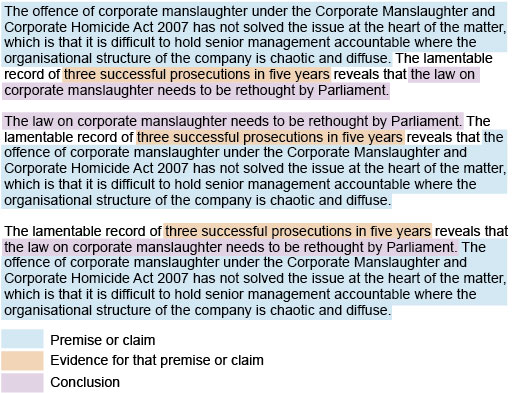1.4 Different ways of formulating an argument
As shown in Figure 2, the same argument can be formulated in different ways.
Figure 2 shows that the premise can be made first and then the evidence for that claim can be provided, or vice versa. You may have your personal preferences about which you consider to be the most effective formulation of an argument. When framing an argument it is important to consider the audience that it is intended for and to make sure that it makes sense in the context in which it is being used.
Mastering short arguments provides a solid foundation for developing longer arguments. However, arguments in academic writing are often complex and take time to develop. So, for instance, the argument in Figure 2 would need to be developed further with a more detailed explanation of exactly why the author considers that the Corporate Manslaughter and Corporate Homicide Act 2007 has failed to get convictions. The author would need to explore the assertion that it is difficult to hold senior management accountable when the organisation of the company is chaotic and diffuse. The author could do this by examining the cases where convictions have been obtained and comparing them with the cases in which the prosecution failed and then analysing whether there are any factors (which support the premise) that can be distinguished between these groups of cases. In doing this, the author is looking to establish both the logic of the argument and the evidence that indicates that the premise and conclusion are correct.

